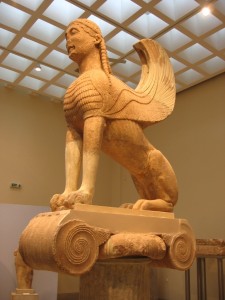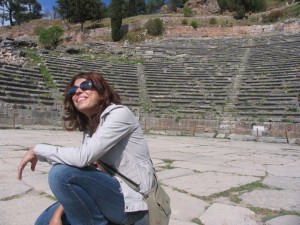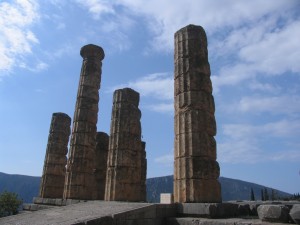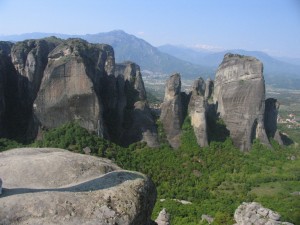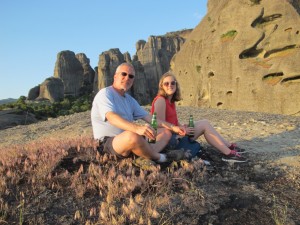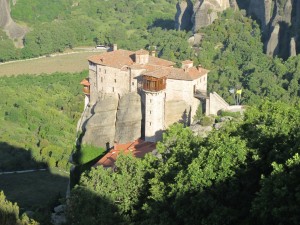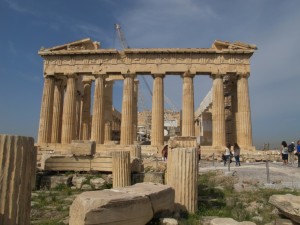 For many on Imprint's Greek Island Tour (GIT), the tour began with an optional two day extension. We gathered in the shadow of the Acropolis for dinner in a favored Athens restaurant. An early start the following morning set us on the path for a busy day and a half of exquisite sights.
For many on Imprint's Greek Island Tour (GIT), the tour began with an optional two day extension. We gathered in the shadow of the Acropolis for dinner in a favored Athens restaurant. An early start the following morning set us on the path for a busy day and a half of exquisite sights.
First stop – Delphi. The “Navel of the World” is one of those unique places where one feels the specialness of the place. Call it what you will – an aura, a presence, a vibe, an energy. However you define it, it is present here. Perhaps it is simply the fact that Delphi echoes in the Western imagination as a place of historical and cultural resonance. To be perfectly honest, the sight itself is not that impressive. But a small, exquisite museum and hand-picked ace guide Penny bring the scattered stones and reconstructed buildings to life.
After our “strategic insertion” visit of a few hours, we continued north through the rugged mountains of central Greece to a second World Heritage destination. Meteora is nothing short of astounding. The name comes from the Greek word meaning to float in the air (meteor, meteorological). Unique not only in Greece but also in the world, the towering spires of conglomerate stone provide a unique and mysterious landscape.
Stunning by themselves, six the stone towers are topped by monasteries, dating back to the 15th century. The resulting combination of stunning nature and amazing architecture is quite simply breathtaking.
Seeking refuge from the profane world, Orthodox monks secreted away in the natural caves of the area all the way back to the 9th century. Eventually more permanent structures were built on the tops of the inaccessible peaks. By the 12th century there were rudimentary monasteries built. By the 14th and 15th centuries, the Byzantine empire was crumbling and the Ottoman Turks were threatening the region. More and more monks sought refuge at Meteora and more monasteries were built. At one time they numbered more than 20.
We arrived at the end of the afternoon when the last rays of sunshine lit up the stacks in a golden glow. We had chosen to stay in a smallish hotel in Kastraki because the view from the hotel is so splendid for the evening. A majority of my group grabbed a bottle of wine or tasty Greek beer for an impromptu happy hour atop a great boulder behind our hotel. It is hard to describe how magnificent and striking are these spires – so I will simply let the images do their 1000 words of talking.
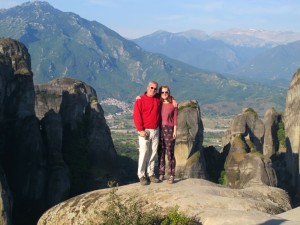 The following morning we visited one of the pinnacle-topping monasteries, Varlaam. But I’m sure the highlight for everyone was the stunning views from amongst the forest of towering spires looking back across the valley.
The following morning we visited one of the pinnacle-topping monasteries, Varlaam. But I’m sure the highlight for everyone was the stunning views from amongst the forest of towering spires looking back across the valley.
It had been hard to imagine the previous evening that the view might actually be better, but the early eastern sun again made the stones pop with color and the great plain we had traveled spread out beyond. We learned about the old mechanisms of accessing the monasteries (net baskets on ropes and winches), the current life of the monks still in residence, and the story of the frescoed church interiors from our local guide Dina. The rest of the day was largely a travel day as we had to cover lots of miles to arrive at the Athens airport for our late afternoon flight to Rhodes and the start of the GIT.

